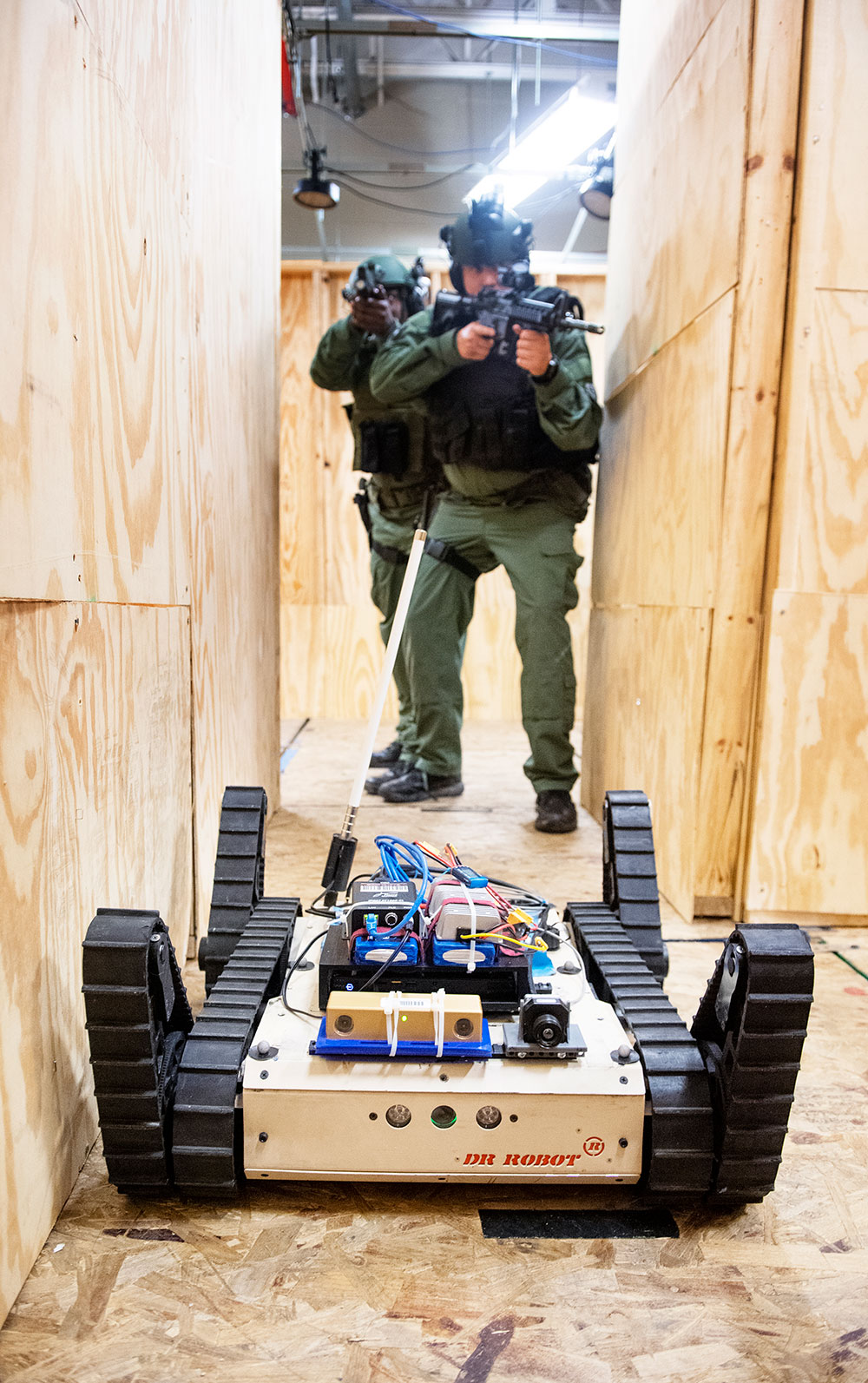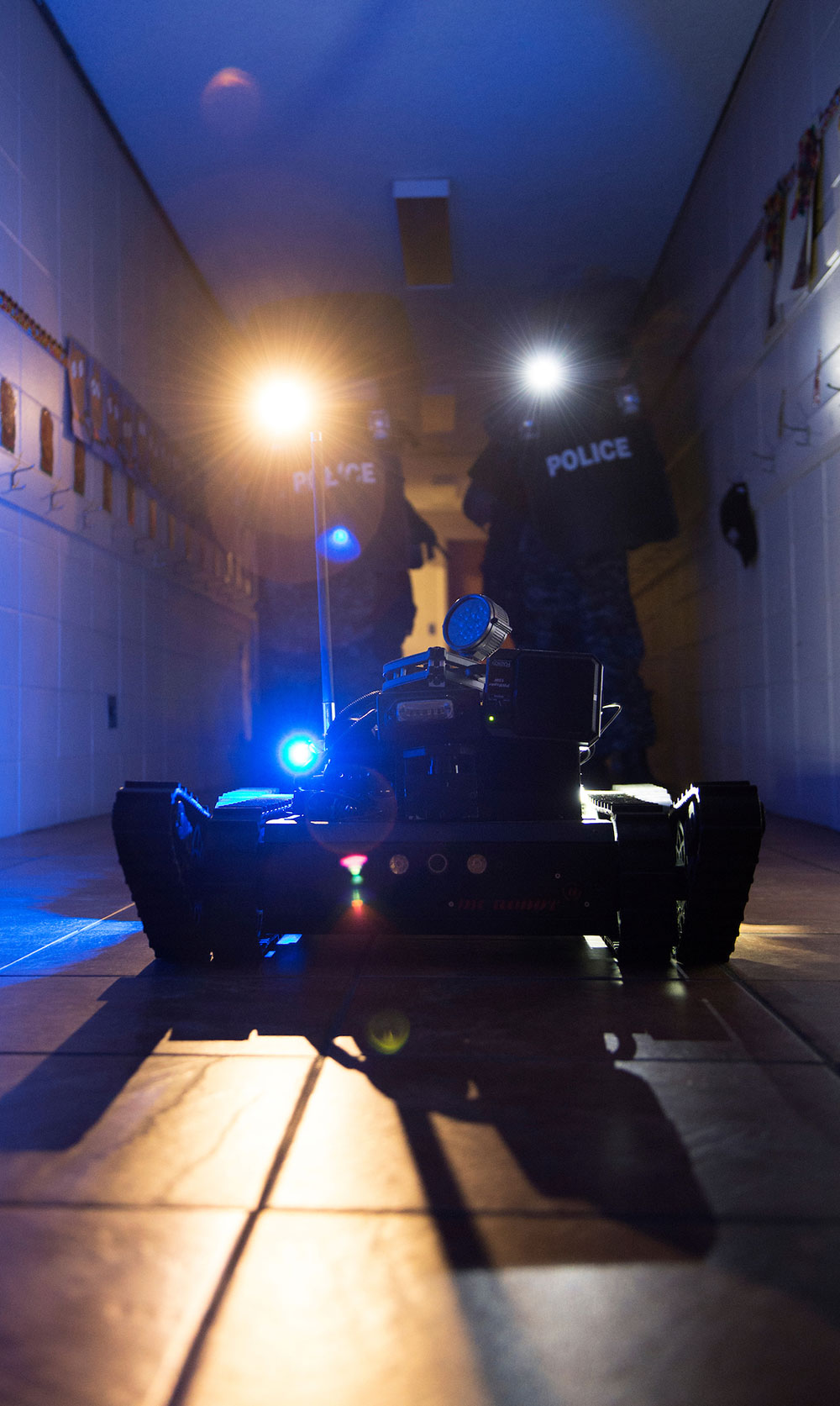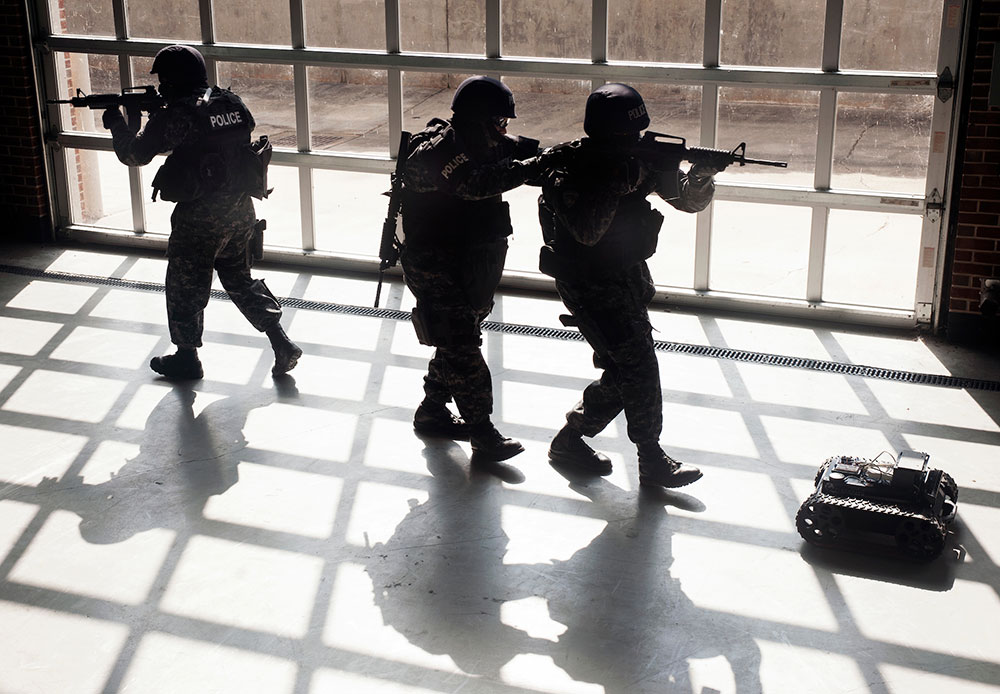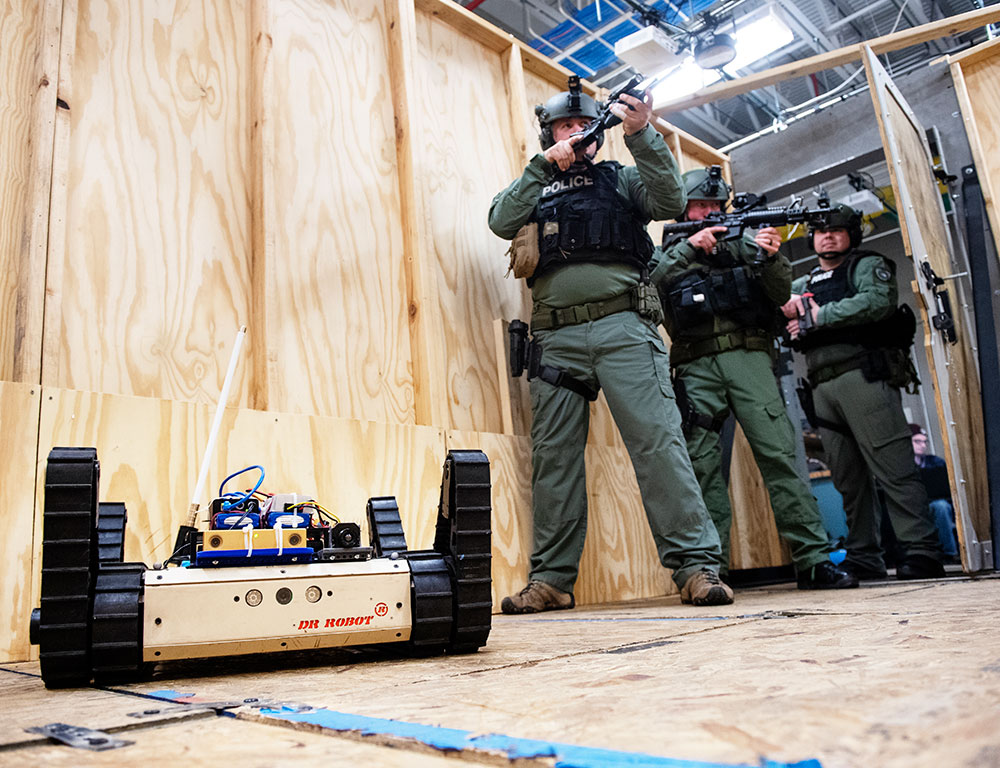SWAT Robotics
Developing technologies that give crime fighters the upper hand

SWAT team and robot in wooden training facility.
Before you can build the best robot, you have to assemble the best robot-building team. That’s the strategy behind the Social, Therapeutic, and Robotic Systems Lab — appropriately known as STaRS — where scientists at CAVS are pooling their diverse research powers to put robots to work for the good guys.
In this case, the good guys are SWAT teams whose training exercises are helping MSU researchers test robots in different crime-fighting scenarios and gather data to improve robot capabilities.
“We are integrating a robot into a team of people in a way that doesn’t negatively impact their ability to do their jobs,” says Daniel Carruth, assistant research professor in MSU’s human factors and ergonomics research group. “The critical element is designing the communication between officers and the robot — how they issue commands and how the robot tells officers what it’s going to do. Training with SWAT team members has helped us realize that it’s not just about making the technology functional but also about building a sense of trust between people and robots.”
Most robots used in law enforcement today are essentially cameras on wheels. But even with basic technologies, robots can gather intelligence and help reduce the number of unknowns in a situation — a vital tactical advantage for SWAT teams.
''SWAT team members approach their jobs with great care for the people they encounter and deal with. We're looking at ways a robot can benefit these teams by making their jobs safer and helping them make better decisions in stressful situations.''
- Cindy Bethel
Director of the STaRS Lab and an Associate Professor
in MSU's Computer Science and Engineering Department
Video feeds allow officers to see inside dangerous spaces at a safe distance, and microphones and speakers enable two-way communication with third parties. Robots also can be programmed to create distractions — loud noises and flashing lights — that can give officers the upper hand when attempting to outmaneuver suspects.
The STaRS Lab wants to refine those capabilities in a robot that can interact with SWAT team members and even act autonomously if needed.
Researchers are working on a voice control system that will allow officers to control robots with vocal commands instead of relying on hand-held and wrist-mounted devices, which pose obvious limitations when crime-fighters need their hands most. They’re also experimenting with augmented reality and display technologies that can help eliminate distractions and enhance officers’ situational awareness.
''The future of technology is heading in the direction of robotics, and we want to be on the leading edge at MSU,'' Bethel says. ''We know that having the STaRS Lab and participating in forward-thinking research activities can be beneficial to the advancement of research and science as a whole. We have a responsibility as a leading research university to drive that advancement, especially when it has the potential to protect people and save lives.''
Before their focus on SWAT teams, CAVS researchers had worked with area police on other projects, including active-shooter training programs using video games and studies to develop ergonomically friendly body armor.Over time they learned that police departments have a variety of training needs yet often lack access to funding, unlike their counterparts in military and defense-related industries.
Studying the interaction between robots and humans involves a spectrum of scientific concentrations all available within the STaRS Lab. The team comprises computer scientists and software engineers as well as specialists in criminal justice, psychology, sociology, communication, electrical engineering, computer engineering and mechanical engineering.
Bethel regards their composition as a core strength. “Having a multidisciplinary team gives you different perspectives on problems as well as different approaches to solving them,” she says. “Everybody has an expertise that can lead us to the right solution.”



Thanks to their partnership with law enforcement, they’re also becoming experts in SWAT-team dynamics. Monthly training exercises at MSU allow researchers to observe how officers function during dangerous and time-sensitive missions, where split-second decisions have serious consequences. What should a robot do — or not do — to be a strategic asset?
Using robots as a force for good has been a theme throughout Bethel’s research. Before she joined MSU in 2011, she focused on designing robots to help with search-and-rescue missions and function as first responders. Her leadership in robotics has added muscle to the STaRs Lab’s capabilities while establishing Mississippi State as a premier research university for advancing human-robot interaction.
